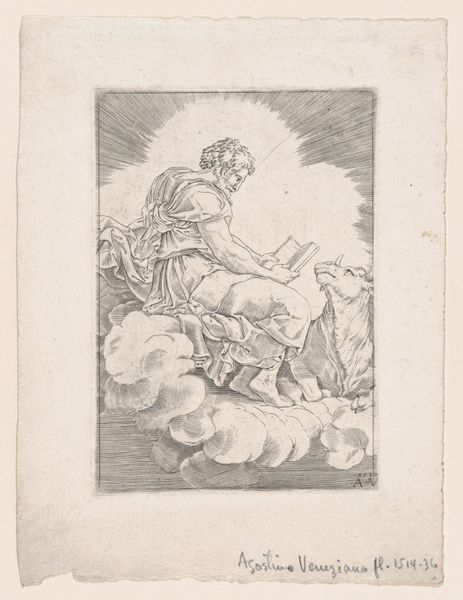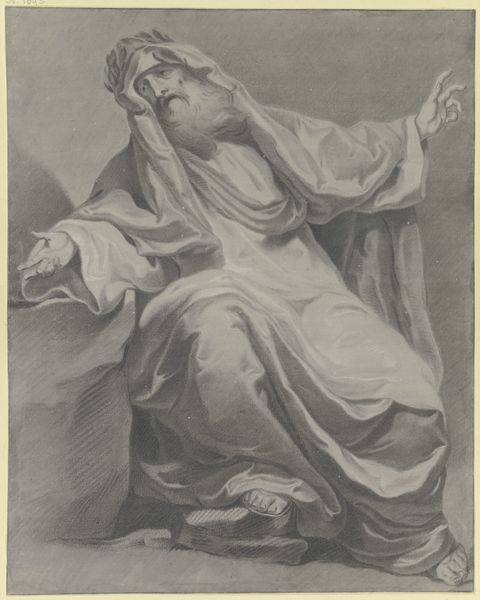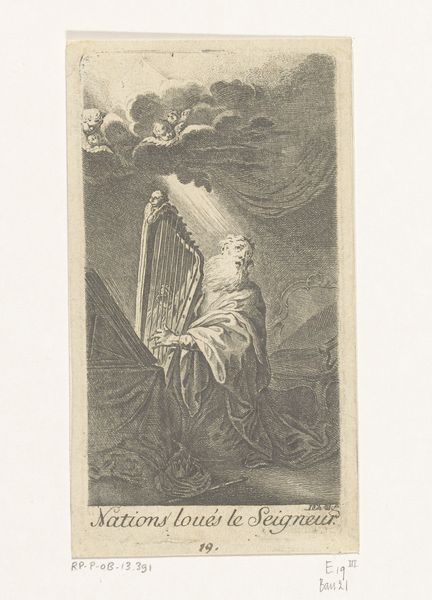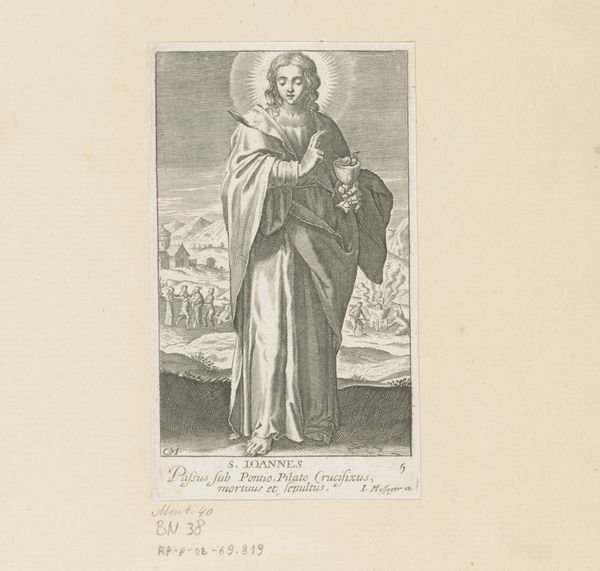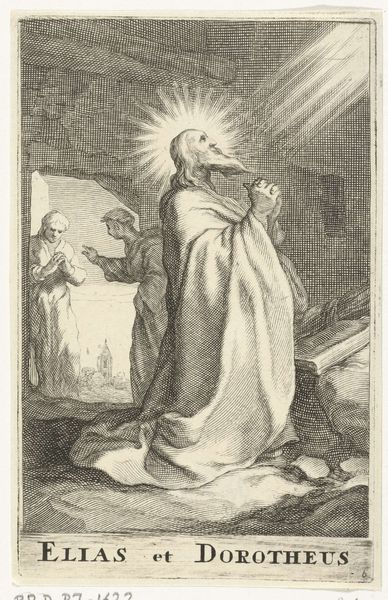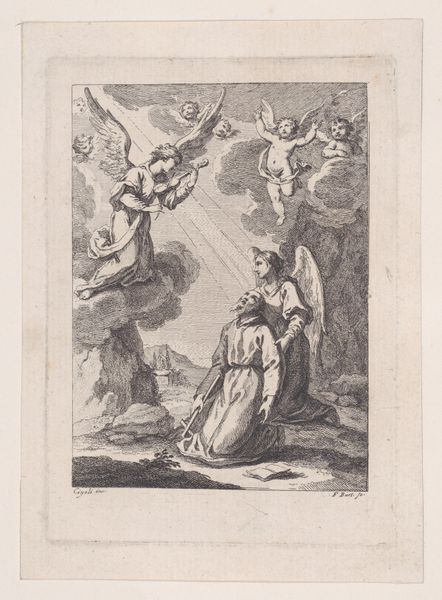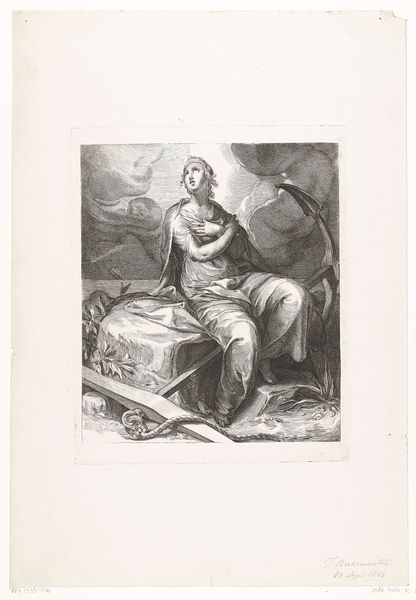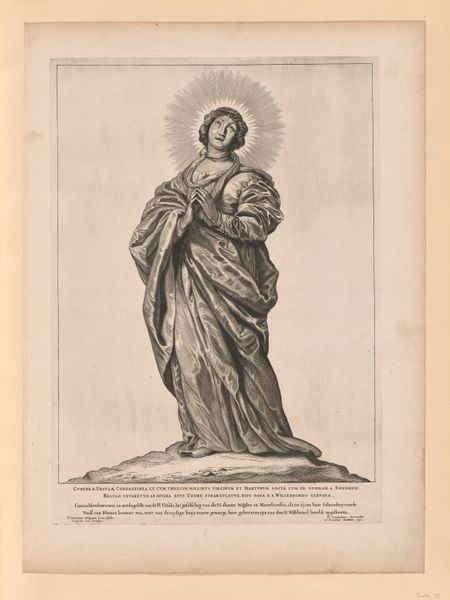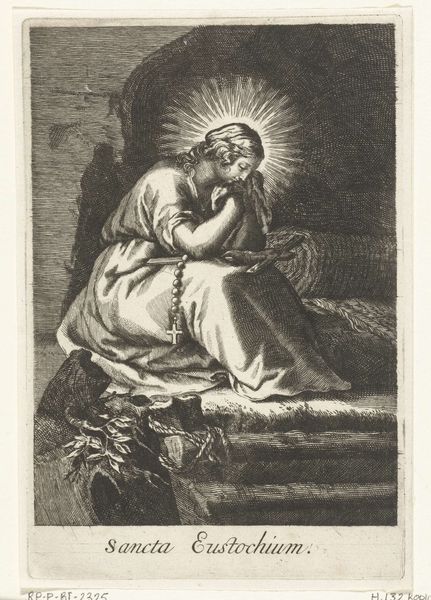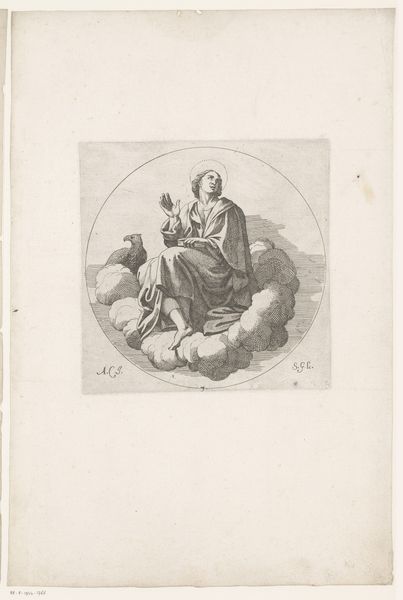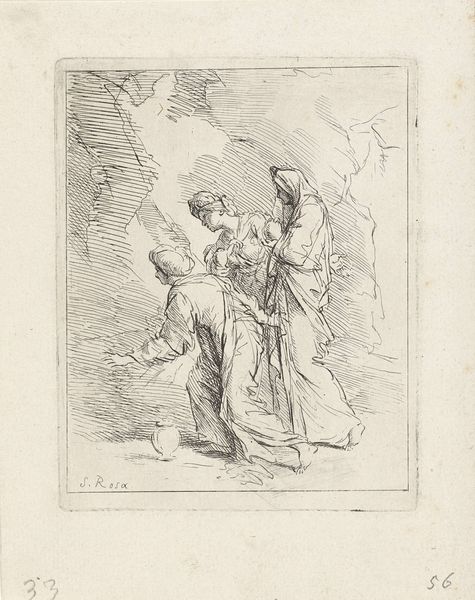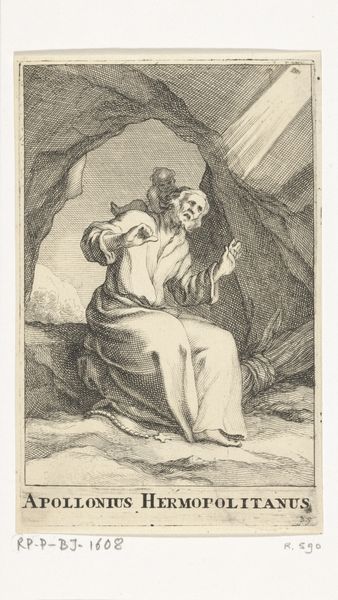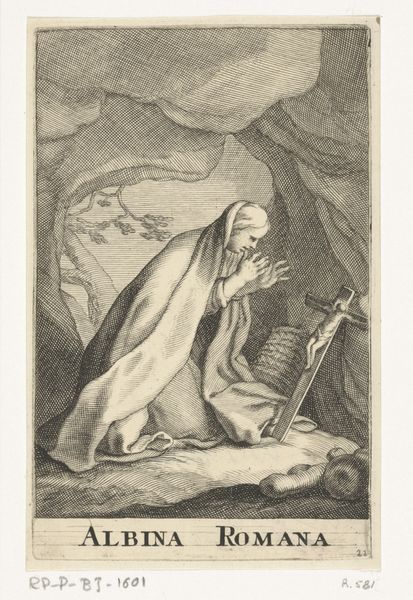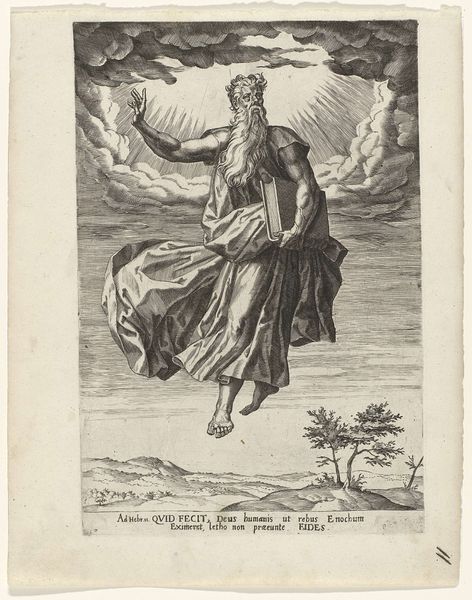
drawing, print, ink, woodcut
#
drawing
#
narrative-art
# print
#
figuration
#
ink
#
pencil drawing
#
woodcut
#
line
Dimensions: 100 mm (height) x 113 mm (width) (bladmaal)
Curator: This is a woodcut entitled "Vignet til Fabricius' Danmarks Historie I," by Balzer Dahl, likely created sometime between 1825 and 1893. Editor: My first thought? A rather stern figure levitating on a fluffy cloud. He gives off a distinct 'don't mess with me' vibe. The lines are so crisp, like an etching. Curator: Exactly! Dahl uses line work exquisitely, almost exclusively, to render form and shadow. It feels biblical, doesn't it? The patriarch, or perhaps even a Nordic take on God himself. The vignette was designed for a history book after all. Editor: A God of history, then. Imposing his will on the narrative? The radiant lines behind him almost trap him there. There's something a little melancholic about him, as if he knows the weight of the tales he must preside over. Power always looks better in flowing robes, of course. Curator: You perceive the weight well. Historical narratives, particularly during that national romantic era, aimed to shape identity and often reinforce power structures. He’s sitting on clouds, not a throne of men, it means he isn’t quite "of" our reality. Editor: Yes, these symbolic choices – clouds instead of solid ground. The history itself is somewhat separate from, or elevated above, earthly concerns. Is he a puppeteer or a thoughtful judge? It’s ambiguous, I think. And is there not an inherent issue in visually codifying the stories by which people will organize themselves? Curator: Absolutely! By choosing specific imageries we are, in fact, selecting the stories we believe, or are forced to, perpetuate in the process. Dahl gives us an origin story, literally drawn from above. He dictates both the visual, and very plausibly the political as well. Editor: Thinking about that line work, though. There’s something beautifully relentless about it. Each stroke contributes to a formidable presence. Curator: He wants us to listen, and the artist's sharp strokes demand that we watch and pay close attention. Editor: I guess what strikes me most now is how much storytelling can reside in such seemingly simple strokes of ink and light. Curator: Yes, Dahl's work certainly reminds us to read between the lines – and in this case, appreciate them.
Comments
No comments
Be the first to comment and join the conversation on the ultimate creative platform.
